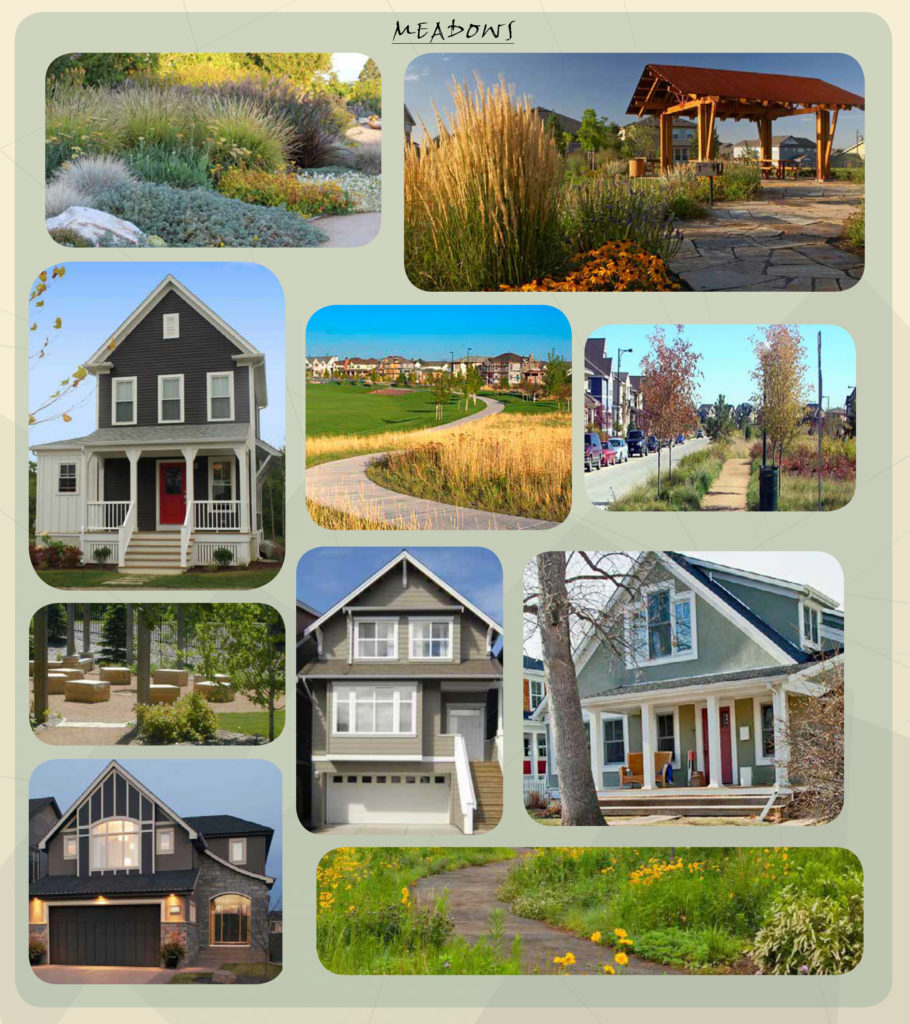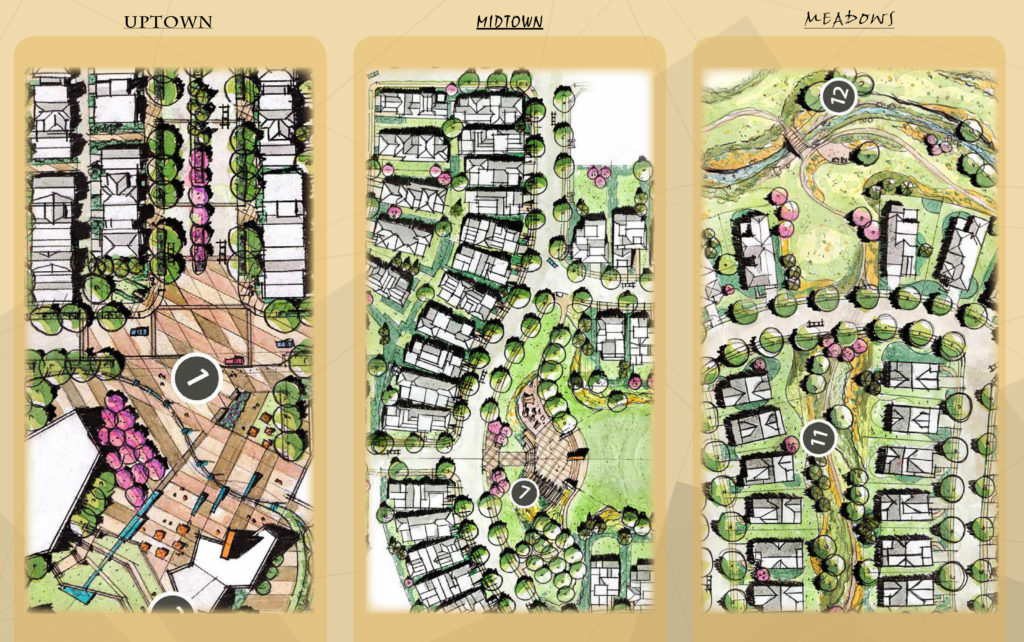Respect the Context
- Understand how a new community will fit within the natural and built environment to act as a foundation for future decisions.
- Open large community spaces to the greater region to create an identity that goes beyond the borders of the community.
Create a Community Heart
- Establish gathering places to bring people together.
- Provide uses that are common to most residents.
- Place higher densities around those uses to enhance feasibility.
- Provide multi-modal connections to the community heart.
Provide a Variety of Open Spaces and Amenities
- Allow for a wide range of activities.
- Establish strong trail connections for a walkable community.
- Create shared spaces to promote ownership of common facilities.
Establish a Mix of Land Uses and Housing Types
- Integrate uses that support everyday life.
- Create a range of housing types and price ranges to integrate people economically and socially.
- Connect higher density housing to activity centers.
- Allow for a variety of building massing and texture.
Allow for Neighborhood Evolution
- Establish flexibility to respond to changing market conditions or housing needs.
- Allow variations in architectural styles to be built throughout the community.
- Provide opportunities for carriage homes or mother-in-law cottages to increase housing density near the community center.
- Allow for future expansion while remaining compatible with the original style of the home.
Balance Auto and Pedestrian Systems
- Encourage Complete Street design.
- Establish a network of off-street trail connections for pedestrians and bikes.
- Reduce dependence on convenient or excessive parking.
Within the overriding goal to create a single, unified community defined by places and events, each of the components listed above were part of the framework for community design. It was especially important to create a heart, or center, through an artful blend of public spaces defined by programmed uses in large plazas, more urban architecture and street design, and a mix of retail and higher density residential uses. An urban energy on the street and in the plazas enriches daily life. Supporting this was the introduction of a community icon element that anchored important architecture within the community and was also expressed through street furniture, walls, and fences. The architecture of the “Uptown” area is characterized by a contemporary re-invention; its designs were inspired by the essence of Traditional Styles, notably Prairie and Farmhouse with some edgy, contemporary homes.
Traversing the community, the architectural (not just architecture-the landscape also changes)character evolves to a Moderated Modern look with a balance of contemporary and traditional architectural elements. Defined as “Midtown,” the setbacks become more generous, larger tree lawns define the streets, and the parks and open spaces have a more relaxed feel. While Uptown invited people from a larger region, Midtown is designed to host smaller events for the community with intimate little parks and green spaces to enhance the fabric of the neighborhood. Park landscapes have both formal and informal spaces with a distinct edge.

Near its periphery, the community character subtly shifts again at “The Meadows.” Natural areas with soft trails and informal planting define the open spaces. The architecture relies on traditional styles; contemporary architecture is out of place. Homes sit on larger lots with generous tree lawns. There is a celebration of the outdoors as the built environment blends seamlessly with nature.

By creating neighborhoods defined by different architecture, landscaping, and roadway character, yet pulled together by community elements that permeate all, the community challenges the competition’s homogeneity and stands apart. And it does this in a thoughtful, crafted way where each neighborhood appeals to a different buyer profile to bring a dynamic quality to the whole community. The result is “One Community” with a true sense of identity, and enhanced marketing and sales.

Full article, written by Tom Kopf, can be found in the Spring 2016 issue of Best in American Living.

